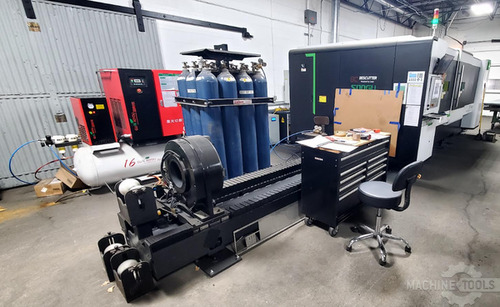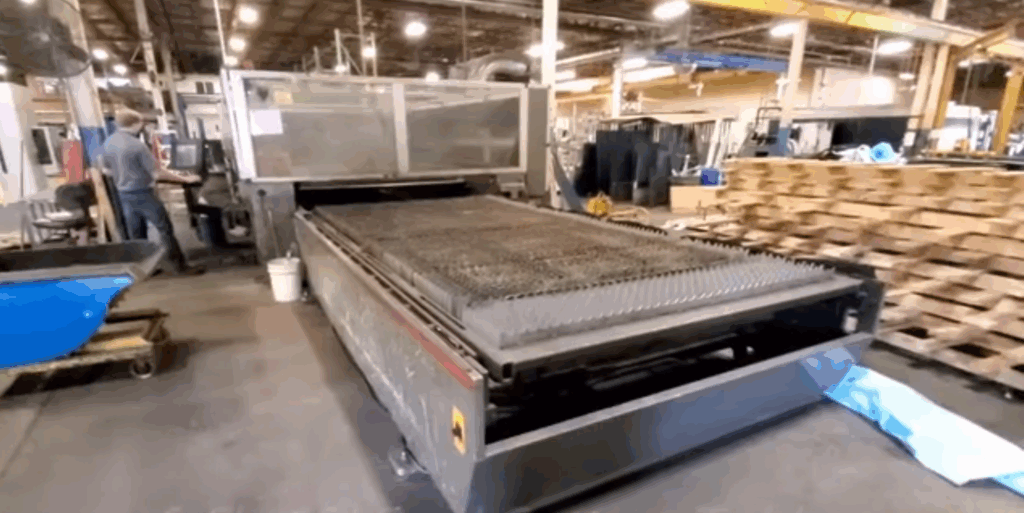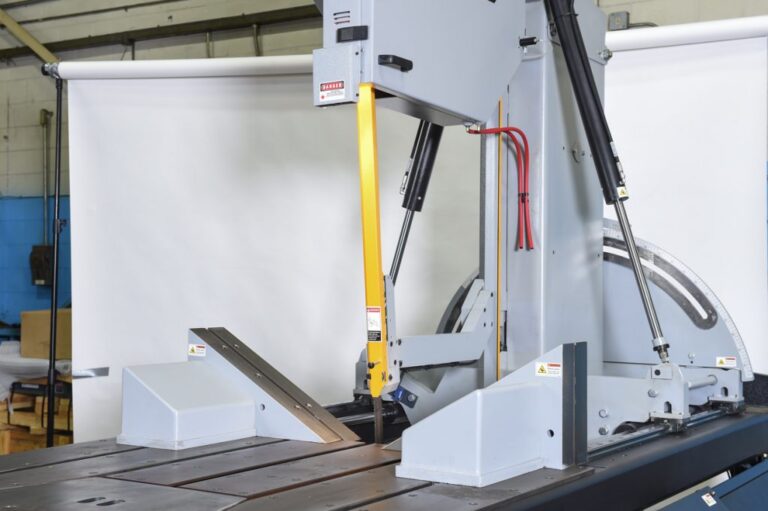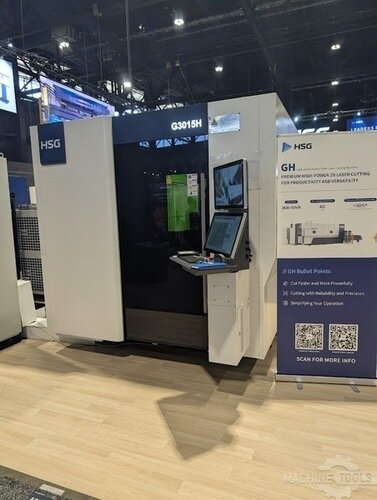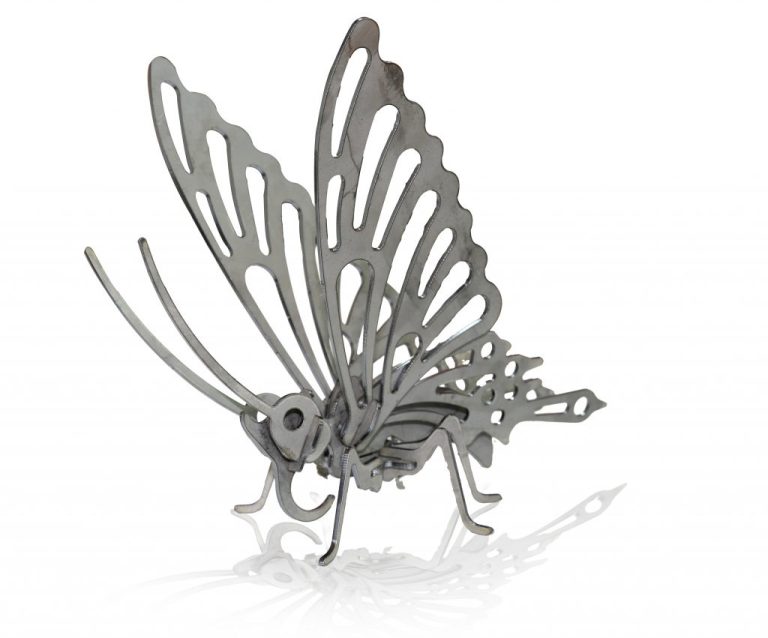I am Kyle Bialozynski, a Midwest sales executive who shows up in boots, walks the line with your crew, and talks in the same terms you do. I have spent my career solving real production bottlenecks on beam coping, fit-up, and rework, not just quoting machines. When I recommend a system, it is because I have seen it withstand heat, slag, dust, and the schedule pressure that comes with structural jobs. The PCR41 robotic plasma cutting system is the most accessible way I know to bring true four-face processing, laser measuring, and robotic precision into a small to mid-market operation without turning your shop upside down.
Walk the line with me: PCR41 four-face processing that finishes beams and channel in one setup
The PCR41 combines a robot, a plasma torch, and an advanced non-contact laser measuring system so you can process all four faces of beams and channel in a single pass. That means weld preps, copes, holes, beam splitting, stair stringers, seismic details, and part tabbing get done in one setup. You move material into the cell once, it is clamped, measured, rotated or accessed intelligently, and finished parts exit to the next station. Less handling, fewer forklifts in the aisle, and fewer chances for error.
Sales-based insight and solutions:
- If you are coping on a manual station, drilling on a separate line, and then hand prepping weld bevels, consolidation to the PCR41 immediately reduces moves and queues. A single flow line frees your saw and drill for what they do best and puts the complex cutting on one robotic cell.
- For small to mid-sized structural shops, the PCR41’s competitive pricing and small footprint let you add high-mix capability without reconfiguring your entire building. It fits near a bay door or next to your saw line with minimal disruption.
Machine recommendations:
- Pair the PCR41 with all-weather infeed and outfeed conveyors to maintain a progressive flow. Use infeed for raw stock staging and outfeed for finished part buffering to keep the robot cutting while a crane or forklift clears completed parts.
- Add simple stops and zones on the conveyor to let the operator stage the next bar while the current job finishes. This keeps your arc-on time high.
Technical and logistical knowledge:
- The dual clamping system locks material securely, then the laser and rotary encoder measure real geometry and position without probing. That corrects out-of-straightness before the cut begins.
- Four-face access removes the need to flip beams between work cells. The robot’s collision detection safeguards torches and consumables if a cut path is obstructed.
- Floor space is efficient, power and air requirements are typical for an industrial plasma cell, and the control cabinet and guarding are designed for shop environments.
Efficiencies and progressive assembly process:
- Scribing and layout marking on the beam reduce fit-up time at the welding stations. Your team gets marked locations for stiffeners, stairs, and connections, so the assembly bays move faster with fewer measuring mistakes.
- With true hole technology and highly accurate movement, bolt holes and slots fit right, which speeds bolting and reduces on-site headaches.
Cut faster with robotic precision: plasma, bevel, and marking that raise fit-up quality and throughput
The PCR41 delivers the speed of plasma cutting with robotic accuracy. Complex weld preps are repeatable, holes are clean, and copes are consistent. You get higher quality fit-up and fewer grinding hours. The machine was built to automate what you already do, only faster and with less variation.
Sales-based insight and solutions:
- If torch cuts and grinder time are eating into your margins, the PCR41 brings repeatable bevels and clean edges. Less touch-up means your welders spend time welding, not fixing cuts.
- For seismic details and stair stringers, the consistency of robotic motion and laser verification reduces rework and inspection delays.
Machine recommendations:
- Specify the cut package that matches your most common material thickness and hole size needs. I can help tailor the torch and consumable set to your typical profiles.
- Use the scribing option on every part that travels to an assembly bay. The small time spent scribing saves hours downstream.
Technical and logistical knowledge:
- The non-contact laser and rotary encoder detect material deviation before the torch fires, so you do not need to probe each face. That protects consumables and preserves accuracy.
- Collision detection shuts down motion if an unexpected interference occurs, protecting the torch, robot, and material.
Efficiencies and progressive assembly process:
- By combining beveling, coping, and hole cutting into one pass, you cut handling steps out of your routing and shorten lead time.
- The cut quality and hole accuracy support direct fit-up, so your assembly moves from cutting to welding with fewer stops at rework.
Bring your CAD to the cell: offline programming, smart nesting, and seamless ERP tie-in
The PCR41 reads and creates NC1 files, so you can go straight from leading 3D detailing CAD to the machine. Offline programming keeps the robot cutting while you prep the next job. No time wasted on custom macros or manual code cleanup.
Sales-based insight and solutions:
- Eliminate tribal knowledge programming. Your detailer exports NC1, we verify toolpaths offline, then schedule runs by project, erection sequence, or due date.
- Smart nesting and batching by section size or job reduces changeovers and keeps conveyors flowing.
Machine recommendations:
- Set up a simple office-to-cell workflow: detailing exports NC1, production control checks cut lists, then the PCR41 software generates paths and sequences. We can tie this to your ERP job numbers for traceability.
- Use barcoding on travelers to sync programs and reduce operator selection errors.
Technical and logistical knowledge:
- Offline simulation confirms reach, torch angles, and clamp clearances before the operator ever hits start. That protects cycle time and consumables.
- The control software is easy to use for operators and integrates well with standard plant networks. Remote live support is available to keep you running.
Efficiencies and progressive assembly process:
- Layout scribing from the model carries project intent straight to the floor. Welders see what the modeler intended, so fit-up is repeatable.
- Standardized outputs reduce hand transcriptions and minimize mismatches between CAD and cut parts.
BESCUTTER FLY PRO 3015
CINCINNATI CL840
Protect people, reduce handling: intelligent clamping, laser measurement, and automated rotation
Safety and handling are built into the PCR41. Dual clamping stabilizes heavy sections. The laser measures without touching, which means no manual probing or risky reach-ins. Automated access to all four faces keeps forklifts and bridge cranes out of the cell until parts are complete.
Sales-based insight and solutions:
- Fewer manual moves lower risk and labor hours. The robot does the hard work inside a guarded cell while your crew focuses on higher-value tasks.
- Marking and scribing reduce tape measure time and ladder work at fit-up stations, which improves safety.
Machine recommendations:
- Position the cell so finished parts exit toward your assembly bays. This creates a natural progressive flow and keeps green parts moving forward, not backtracking.
- Add simple physical barriers or paint lines to define forklift lanes around the conveyors. Clear traffic patterns improve safety and flow.
Technical and logistical knowledge:
- Guarding, interlocks, and scanning options create a safe envelope. Collision detection further protects equipment in the event of unexpected contact.
- The conveyors are all-weather durable. You can feed from the yard side or return finished parts to indoor staging depending on your layout.
Efficiencies and progressive assembly process:
- One setup to access four faces means fewer crane picks. That alone removes hours from a typical week of structural production.
- With accurate measuring and clamping, your first part is right, not the third. That confidence lets you run bigger batches without inspection slowdowns.
Validate ROI on your parts with me on site: real cycle times, training plan, and rapid installation
I will come to your shop, run time studies on your actual NC1 files, and build an ROI around your real mix of beams, channel, copes, holes, stairs, and seismic details. We will count the moves you remove, the grinder hours you eliminate, and the rework you avoid. Then we will compare that to the monthly cost of the machine or a financing plan through Tech Financial.
Sales-based insight and solutions:
- Tech Financial offers flexible payment plans, quick approvals, and potential tax advantages so you keep working capital in the business while you modernize your line.
- The PCR41 includes an industry-leading warranty and remote live support to maximize uptime.
Machine recommendations:
- Plan a two-step rollout: install and run your most common profiles first, then expand to complex preps and marking once the team is comfortable. This phased approach ramps production without stress.
- Cross-train two operators and a maintenance tech during the included training so you are covered across shifts.
Technical and logistical knowledge:
- Installation is fast and clean with a small footprint. Requirements include standard industrial power, clean dry air, and dust or fume extraction appropriate for plasma.
- We will map your flow from steel arrival to assembly. The goal is a straight path with minimal cross-traffic so the PCR41 becomes a pacing asset, not a bottleneck.
Efficiencies and progressive assembly process:
- By cutting, beveling, and scribing in one pass, you deliver parts that go straight to the weld cell in assembly order. That progressive flow reduces work-in-process and shortens project lead times.
- We will set targets for arc-on time, cut inches per shift, and rework rate, then review them together after go-live.
FAQ
What profiles does the PCR41 process best?
- The PCR41 excels at beams and channel where four-face work, copes, holes, and bevels are common.
How accurate are holes and bevels from plasma?
- With true hole technology, non-contact laser measurement, and tight motion control, hole quality and bevel consistency support direct fit-up with minimal touch-up.
Do I need expert robot programmers to run it?
- No. The interface is easy to use, programs come from NC1 files, and offline simulation prepares jobs before they reach the cell.
What about maintenance and consumable costs?
- The system is designed for low maintenance. Collision detection, secure clamping, and accurate measurement protect consumables and reduce waste.
How quickly can we install and start producing?
- Most shops move from delivery to first production in a short window with proper prep. Training and remote support help you ramp steadily.
Can this tie into our ERP and job tracking?
- Yes. NC1-based workflows and simple barcoding align well with common ERP systems for part traceability and scheduling.
- Do you offer financing options?
- Yes. Through Tech Financial you can secure flexible plans, quick credit approvals, and potential tax advantages.
I am here to help you validate the math, plan the layout, and make sure this system pays for itself on your mix of work. Call or email me and we will walk the line together and build the plan.
Kyle Bialozynski
Sales Executive, Mac-Tech
kyle@mac-tech.com
414-704-8413
Get Weekly Mac-Tech News & Updates

